CSA Designation Advisory Group Meeting #2 - March 1/2, 2012
March 1, 2012
Horrendously icy driving conditions in the York/Simcoe area delayed my departure from home. As I drove north, conditions improved. For a while it looked like I was going to make the arranged 10 am tour of the Tembec Huntsville Mill afterall. However, just south of Gravenhurst, a transport truck jack-knifed on its side blocking the northbound lanes. Between the center concrete dividers and an embankment below the shoulder, it took over an hour to clear the lanes and for traffic to resume. So unfortunately I missed the mill tour.
I made it to the meeting centre in time for lunch and the afternoon bush tour in the Brulé area. The advisory group members were convoyed there in AFA 4-wheel-drive vehicles. We stopped at various locations, examined a number of unique situations and discussed a wide range of AFA logging practices.
We took the Arrowhon Pines Road north from Highway 60 and then continued NW to Brulé ...
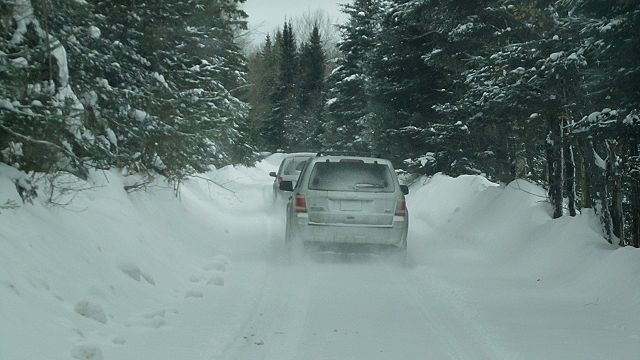
NW of Brulé, we examined and discussed tree-marking in a hardwood area ...
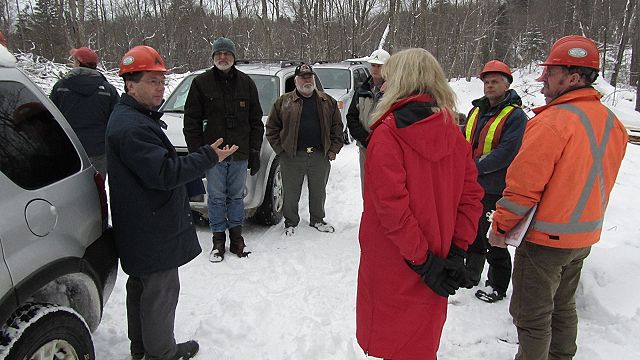
This "W" marking ensures that this large tree is identified and retained to benefit wildlife ...
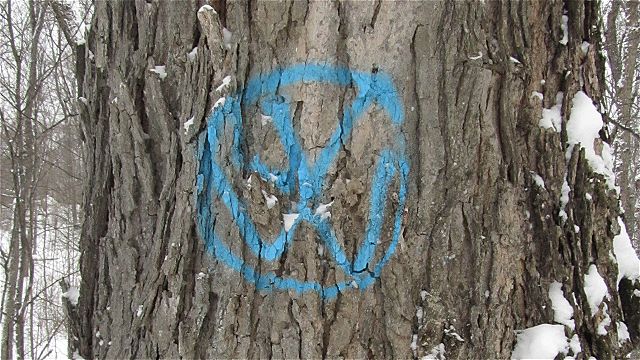
The tree's tall canopy and cavities are used by wildlife ...
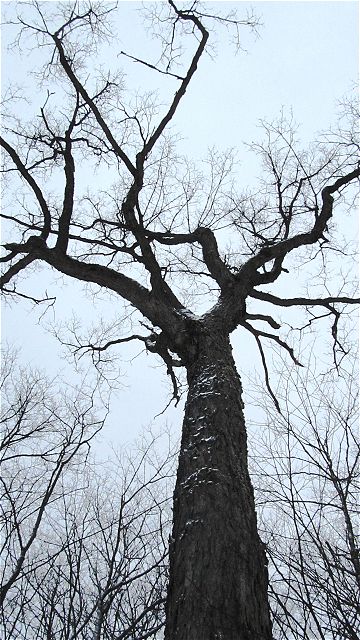
Here we discussed the controls placed on aggregate extraction for logging roads ...
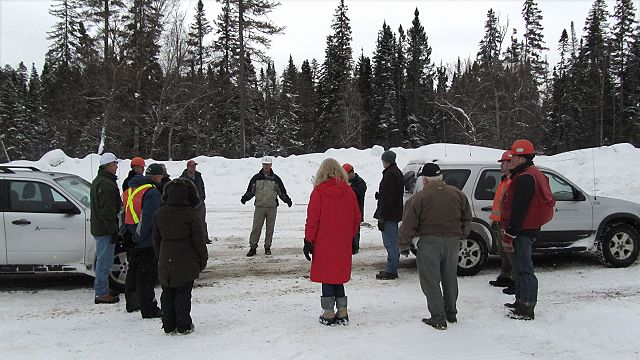
The last loads of "select-cut" Maple and Hemlock waiting to be hauled out of this area ...
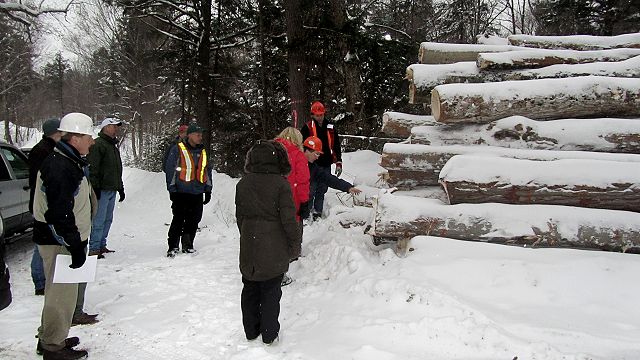
March 2, 2012
After acceptance of the last meeting's minutes and the Terms of Reference govening the advisory process, Tom Clark gave a brief presentation on Participatory Decision Making, indicating that the CSA standard recognizes the provincial forest management planning process (the FMP) and the directives it provides. Participatory Decision Making involves dealing with new topics and reaching decisions concerning them, with understanding that various views are important to the process.
Gord then took us trough a quick review of the AFA Certification Website at .. www.certification.algonquinforestry.on.ca.
Part of our distributed materials was a 26-page Summary of the Long-Term Management Direction. Gord took us through the development of this "LTMD" by way of a lengthly PowerPoint presentation. Extensive questions were raised by the advisory participants. Out of the many questions raised, following are my own (as a sample) and Gord's responses. Comments in italics are for clarification.
Q: Is the age of old growth dependent on species? A: Yes. It varies by forest unit (group of similar species).
Q: Was a baseline amount only determined on what is to be maintained in the RU zone? A: No. Contribution to the total old growth forest condition is being made from both the managed and the unmanaged forest (including all protected zones in the park).
Q: How do you factor in the disturbance effect on tolerant hardwood and other forest types, such as wind damage? A: Based on the best available science, natural disturbance numbers are calculated for each forest unit. Refer to the analysis package in the FMP for complete details..
Q: How frequently are the inventories updated? A: Before each FMP all recent disturbance areas are updated and the rest of the forest is age updated..
A pair of short videos were then presented .. one before lunch and one after ...
We then started into the complicated process of preparing to incorporate the new CSA SFM standard's mandatory Indicators within the existing framework of voits or Voit Matrix.
The following explanation of what comprises a V.O.I.T. is extracted directly from the standard ...
Value: A DFA (defined forest area) characteristic, component, or quality considered by an interested party to be important in relation to a CSA SFM element or other locally identified element.
Objective: A broad statement describing a desired future state or condition of a value.
Indicator: A variable that measures or describes the sate or condition of a DFA-specific value and for which one or more targets are set.
Target: A specific statement describing a desired future state or condition of an indicator.
The greater part of the afternoon session was spent discussing six indicators of the first element of Criterion 1. Biological Diversity ... Element 1.1 Ecosystem Diversity ... Ecosystem area by type ... Forest area by type ... Forest area by seral stage ... Total area by even-aged forest unit in the old growth development stage by the start of each planning term ... Range of disturbance patch sizes within the Bounds of Natural Variation ... Degree of within-stand structural retention.
(Barry Bridgeford .. 2012-03-24)
Official AFA Minutes of this meeting can be downloaded here.


